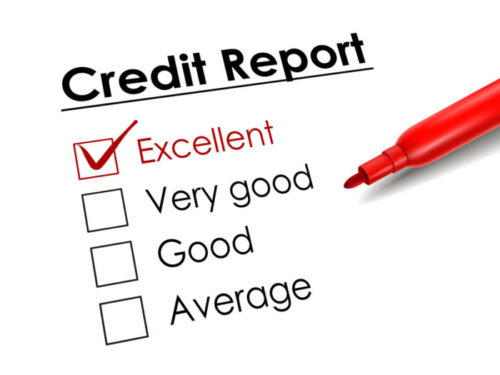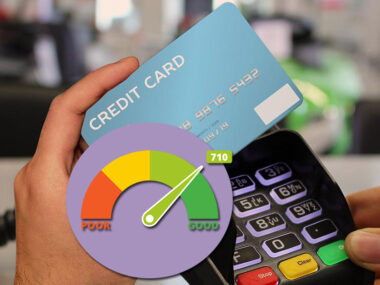When it comes to applying for a loan or a new credit card, the higher your credit score, the more likely you are to be approved, and to receive the most favorable terms. Credit scores range from a minimum of 300 points to a maximum of 850. A score of 850 is widely considered to be “perfect” credit, but is that actually attainable?
The short answer is yes, a credit score of 850 is possible. That said, while it’s the highest score you can get, it’s actually not necessary to achieve. Maintaining excellent credit, defined as a score of 720 or higher, is enough to qualify for the best terms on any financial product. There’s no harm in working to achieve a credit score of 850, though, and doing so can actually put you well into the excellent score range.
Table of Contents
Excellent vs. Perfect Credit
While a perfect credit score is certainly impressive, when it comes to your financial health and overall financial strategy, that’s about all it offers. An 850 credit score gives you little more than bragging rights, and many lenders will offer you the same terms and products at that level as they do to those with a score of 720.
That’s because everyone’s credit score falls into a category determined by where they are within a range of scores. These categories represent the level of risk you present to the lender. Bad credit is a score ranging from 300 to 629. Scores from 630 to 689 are “Fair,” and 690 to 719 are labeled “Good.” Excellent credit is anything from 720 to 850, which ultimately means that someone with a score of 730 is considered on par with someone who has a score of 850.
According to the credit bureau Experian, the average American has a credit score of 703, meaning they have good credit. Only about 1% of people ever achieve a perfect score. With that in mind, your financial strategy should be focused on achieving the highest score you can, but not necessarily focused on perfection.
For many people, the perfect score is only a temporary achievement, since credit scores can fluctuate almost daily based on how you use your credit. Instead of focusing on that perfect score, strive to score within the excellent range to ensure financial stability and access to credit.
How to Get a Perfect Credit Score
Your overall credit score is determined by several factors: payment history (35%); amounts owed (30%); length of credit history (15%); credit mix (10%); and new credit (10%). If you are working toward improving your credit, these are the areas to focus on.
Payment History
In short, to get a perfect credit score, you need to make all of your payments on time every month. Even if you are only paying the minimum amount due, the payment must be received on time to protect your credit.
Every lender reports late payments differently (some only notify the credit bureaus once your payment is 90 days late, for instance) but late payments can have other consequences. For example, some credit card issuers will reduce your credit limit when you miss a single payment, which affects how much you owe in relation to your available credit, reducing your score.
Amounts Owed
Carrying a balance on your credit card doesn’t necessarily equal a low credit score. What matters is how much you owe as a percentage of your overall available credit. The less you owe, the better, as low utilization rates drive up your score.
In fact, those with perfect scores tend to use less than 3% of their available credit at any given time. If your balances are high, or your cards are close to maxed out, focus on paying off what you owe to give your score a boost.
Length of Credit History
Building a solid credit history takes time, and the longer you maintain accounts in good standing, the more positive the effect on your score. On average, those with perfect scores tend to have about 25 years of credit history under their belts.
You can add some time to your history by becoming an authorized user on an account owned by someone with a pristine credit history, but ultimately, the only way to max out your points here is time and responsibility.
Credit Mix
Credit cards aren’t the only way you can build a positive history. In fact, lenders like to see a mix of credit types on your record, including installment loans (such as student or auto loans) and real estate loans. Successfully managing several types of debt is a positive sign, so as you work toward a higher score, use all the tools at your disposal.
New Credit
Applying for new credit can temporarily reduce your credit score by several points. Multiple inquiries into your credit in a short time is a red flag to lenders, as it indicates that you could be intending to spend beyond your means.
That said, if you apply with multiple lenders in order to get the best rate on a loan (a practice known as “rate shopping”) your score won’t suffer from multiple inquiries. Ultimately, an excellent credit score means limiting your credit applications and not seeking new credit unless truly necessary.
FICO Score
The most common scoring system used by lenders is the FICO score, which pulls information from all three credit bureaus to determine your three-digit score based on the factors mentioned previously. This score is the most widely used method of gauging risk and evaluating your credit, but some industries use different versions of the FICO score in decision-making.
For example, if you’re applying for an auto loan or a mortgage, lenders might use a scoring formula more tailored to their risk-assessment standards. These industry-specific scores have a different range, from 250 to 900 points, but the general categories of score remain the same.
VantageScore
Although FICO scores are more familiar to most consumers, VantageScores are becoming more common. Developed by the three credit bureaus (Experian, Equifax, and TransUnion), your VantageScore is based on the information contained in all three credit reports. The scoring range is the same, and is based on the same factors, but with some differences in how your points are calculated.
For example, your VantageScore looks at your overall trends in credit card usage and payments to determine your credit utilization, and includes collection accounts less than $100, while FICO scores do not. Maintaining a high VantageScore ultimately requires the same responsible use of credit as your FICO score, though.
Image Source: https://depositphotos.com/





